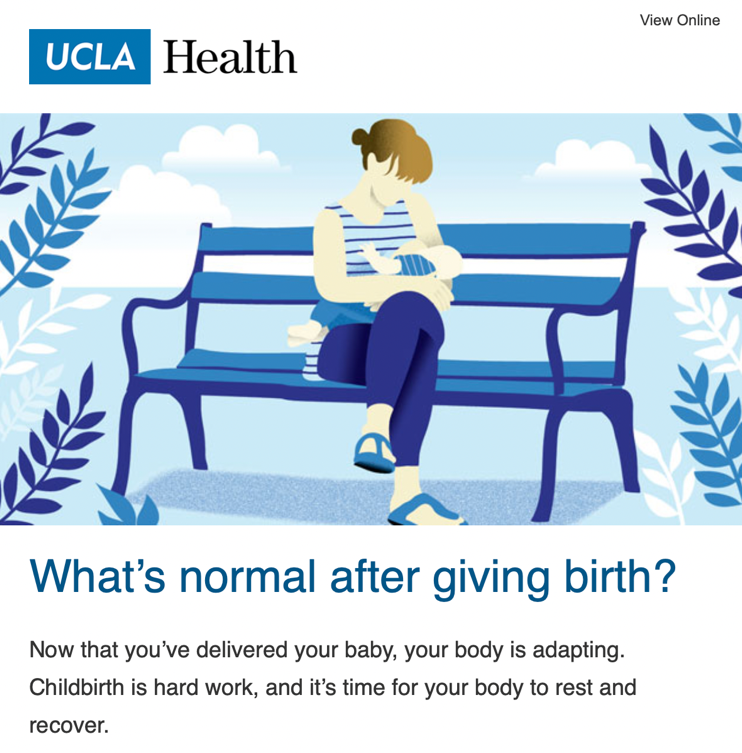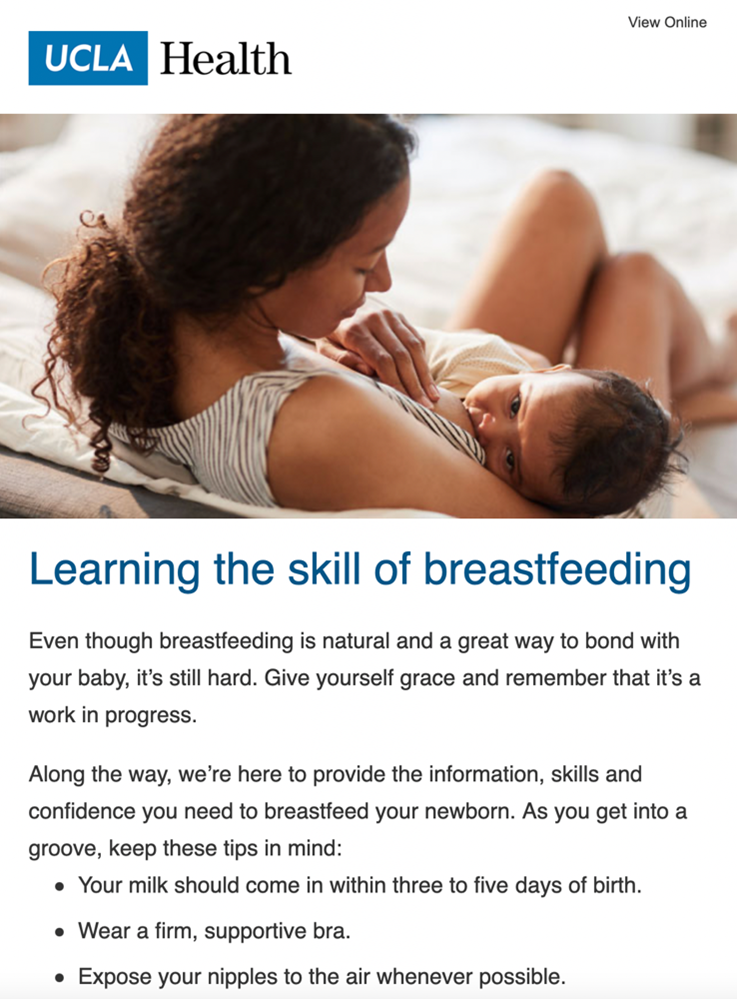
Imagine this: You gave birth to your first child days ago. Before that, you’d never held a baby in your life. Your nurse is reviewing your discharge instructions, and your head is spinning. You are still physically recovering from childbirth — and about to head home with a newborn. Overwhelmed doesn’t even begin to cover it.
That frazzled feeling isn’t unique to new parents. Other people who are discharged from the hospital feel it, too. For example, patients who had major surgery or those who just got a life-altering diagnosis. They may feel overwhelmed, abandoned, and unsure where to turn if they need help.
As a healthcare marketer, you can step in with tailored, helpful content. The right resources can lower patients’ anxiety and ensure they know they can turn to your organization for questions or support.
This level of care and guidance keeps patients engaged, increasing patient loyalty. And it makes sure you stay top of mind for when they need care.
So how can you stay in touch with your patients once they’ve left?
Our client UCLA Health asked this same question before they turned to healthcare email marketing for the solution. Through comprehensive market analysis, they discovered that patients (particularly new parents) are hungry for personalized, timely communication after leaving the hospital. Patients have questions, and who better to provide the answers than the hospital they just left?
To leverage that insight and grow patient loyalty, UCLA Health zeroed in on those who recently had their first baby at one of UCLA Health’s hospitals. After analyzing demographic data, the marketing team learned that new parents valued clear, practical advice on postpartum care, newborn care, and breastfeeding. The team also learned that video content and visual aids significantly improved engagement and comprehension.
With these audience insights, a new project was born: the new parent email campaign. To bring the campaign to life, UCLA Health followed these steps:

Having audience data is one thing — knowing how to use it is another. Through its marketing automation platform, Eloqua, UCLA Health examined its existing patient data and segmented new parents based on:
By creating these segments, UCLA Health could deliver highly personalized content that resonated with specific groups of new parents. For example, they can send emails about breastfeeding support to parents who indicate breastfeeding as their plan. Those who indicate they plan to formula feed get relevant information about that.
Working together, UCLA Health and Aha Media Group took stock of all parenting- and pediatrics-related content published by UCLA Health in its Newsroom, print magazines, YouTube channel, and medical service pages. This turned into a content inventory that the team could reference and link to throughout the new parent email campaign.
After all, why reinvent the wheel if you already have what makes it turn?

From there, UCLA Health and Aha Media used the content to build an 8-week-long email campaign consisting of 6 key messages:
All emails are available in English and Spanish and sent based on language preference.
This content creation didn’t happen in a silo — it involved close collaboration with UCLA Health’s OB-GYN and pediatrics teams . This collaboration ensured the information was accurate, up-to-date, and aligned with the latest medical guidelines.
UCLA Health’s campaign launched in April 2024, and it’s still running as of this writing. So far, the team is excited about the results and potential impact on patient loyalty.
With more than 1,900 emails sent, the results across all emails include:
While UCLA Health’s email campaign targets new parents, the underlying principles hold true for any patient demographic. If you want to use email marketing to grow patient loyalty, focus on these key guidelines:
Do patients know they can turn to your digital channels for clear, trustworthy, and relevant information after leaving your hospital? If the answer is no, it’s time to change that. We can help you stand out in the inbox, connect with your readers, and provide value that keeps them coming back.
Learn more about our hospital newsletter writing and email marketing services today.
We’re on a mission to deliver clear healthcare content to your readers. As a healthcare marketer, you are constantly detangling the complex web of content challenges. We can help by creating strat... Read more
Thanks to artificial intelligence (AI), we hardly lift a finger to accomplish daily tasks. Facial recognition unlocks our phones. TV streaming services tell us what to watch. Bluetooth-enabled ...read more
What Did You Learn? Episode 6There’s a silver lining to the COVID-19 pandemic. As healthcare communicators, we were given an opportunity to come together to solve a huge problem. ...read more
What Did You Learn? Episode 12“We’re in this together.” You’ve probably heard that phrase a lot over the past 6 months. Between the COVID-19 pandemic and the ...read more
If you’re anything like us, your screen time is through the roof lately. But hey, it’s not your fault — or ours. We’re all caught in the same trap, doom scrolling ...read more